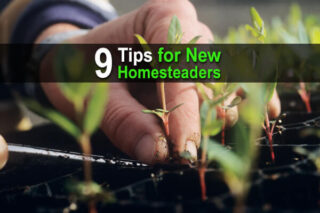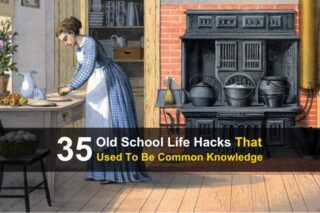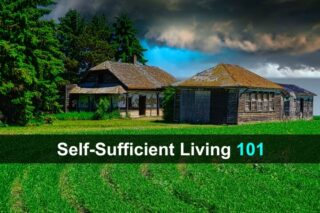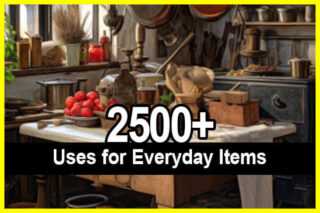Estimated reading time: 9 minutes
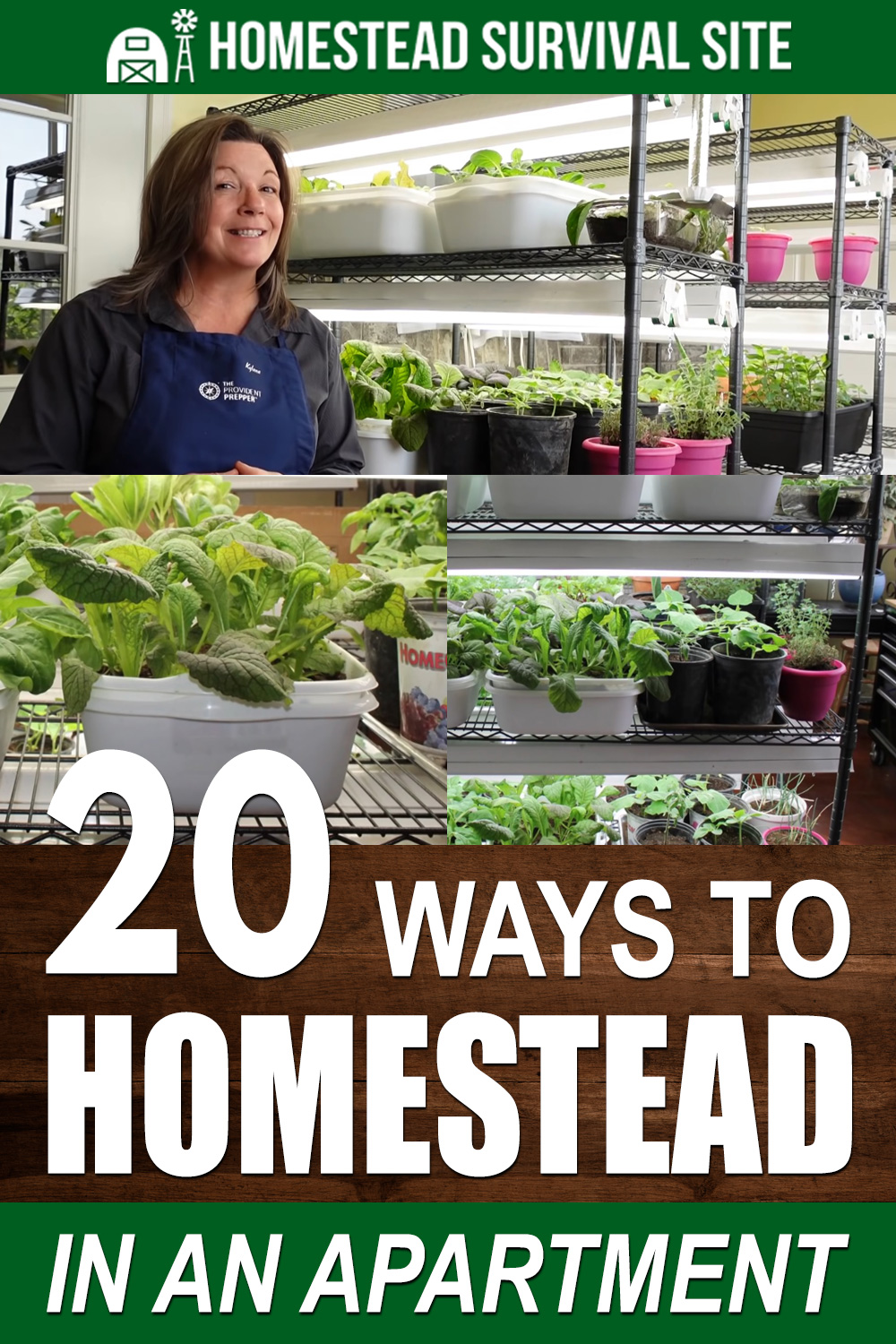
Homesteading is a way of life that you can live anywhere – in the country, in the suburbs, in the city, and even in an apartment. Even if you don’t have lots of land to grow your own food, you can start with what you have and learn new skills.
Even if you live in an apartment, you don’t need to wait for the perfect time or place to start your homestead. You can adopt the mindset of living a sustainable, self-reliant lifestyle right where you are. Here are 20 ways you can homestead in an apartment.
1. Container Gardening
If you have a sunny balcony or a windowsill, you can start a container garden. Homegrown food is healthy, sustainable, and good for the environment since you won’t need to have it shipped, packaged, or sold. With good practices, you can grow a lot of food in a surprisingly small space.
Many plants can be grown in containers on a porch or balcony. Vegetables such as salad greens, radishes, cherry tomatoes, bush beans, and bush varieties of squash and zucchini can easily be grown in pots anywhere you have a spot that gets some sun.
Vining plants, such as cucumbers, small varieties of melon, and pole beans don’t have large root systems so they can grow in a container and be trained to vine up a small trellis. Even sweet potatoes can be grown in a large container and the leaves can be left to trail over the edge of a balcony and even eaten like salad greens.
If you don’t have a balcony, you can grow a number of herbs and salad greens in a small container in a sunny window. You might consider growing multiple planters on shelves or using hanging planters, as well, to make the best use of the space you do have.
2. Grow Lights
If you don’t have a sunny window, you can set up grow lights anywhere in your space. Grow lights will mimic the natural light of the sun and can be set on timers so you don’t have to worry about turning them on and off.
3. Hydroponic Systems
If your space is very small, a countertop hydroponic system might be just the thing you need to start growing your own food. You don’t need soil to grow food using a hydroponic system.
And you can DIY your own system, like this one by MIGardener very inexpensively or purchase a ready-made system here. Some systems are complete with grow lights to help you get the most from your plants.
4. Sprouts and Microgreens
If you are just getting started with growing, sprouts are an easy way to add some fresh greens to your diet without a trip to the grocery store.
Sprouts can be grown in a simple mason jar container and microgreens can grow in any small flat of soil. With a small shelving system, you can grow plenty of microgreens and even have some to sell, also.
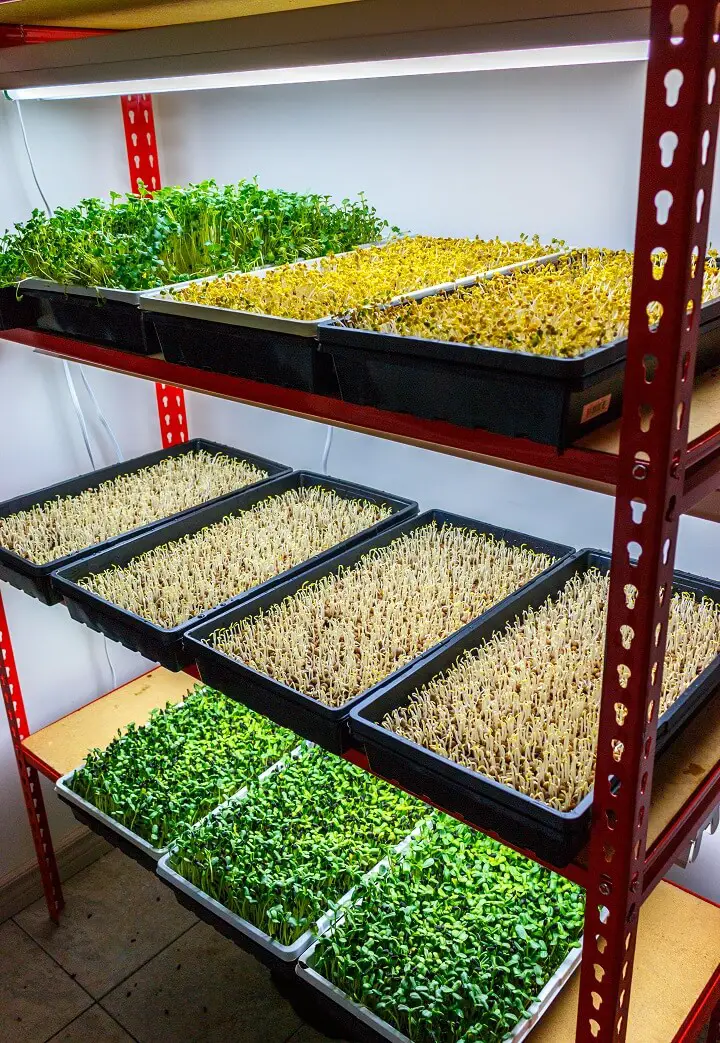
5. Mushrooms
If lighting is an issue, you can easily grow mushrooms in a darker space. Of course, some mushrooms are poisonous, so you should always start with a commercial edible mushroom kit so you don’t accidentally poison yourself.
6. Raising Quail
If you live in an apartment, you probably won’t be able to have any livestock unless you rent barn space from someone else. There is one exception, however. If your landlord allows you to keep pet birds, you might be able to have quail. Quail are excellent egg producers, take up very little space, and are very quiet (especially the females).
If you can’t have chickens or ducks, quail might be a great option. You can keep a couple of female quail together in a small cage in the corner of your kitchen. They have an excellent feed to egg ratio and can even dine on your kitchen scraps.
7. Composting
A great addition to any homestead is a composting system. In an apartment, you probably can’t have a big open outdoor compost bin, but you can have a kitchen composter. These small appliance-like containers will turn your kitchen scraps into compost that can be used as fertilizer for your plants.
Compost will boost the fertility of your soil and give it lots of nutrients that will help you grow more food. As an added bonus, composting helps keep kitchen scraps and food waste out of the local landfill.
8. Worm Farm
You might be surprised that you can grow your own worms in an apartment. A worm bin takes up very little space, and when properly maintained, has no odor or noise. You can feed your worms some kitchen scraps and they will turn them into worm castings, which make fertilizer for your plants.
Many gardeners will pay top dollar for worm castings, so you might have a small side business, as well. Worms don’t need sunshine, so you can keep your worm bin in a closet or even under your bed.
9. Upcycle
No matter where we live, we can take great care of our environment. Upcycling turns unwanted trash into new, usable treasures. With a little creativity, you can turn old bottles and cans into gardening containers. You can transform old clothes into new sewing projects and old furniture can be made into new and repurposed items.
If you have enough space, you can transform unwanted pallets into all kinds of woodworking projects that you can use or sell. Flea markets and yard sales are good places to find items that you may want to upcycle and resell.
Related: 50 Things You Should Stop Trashing And Start Reusing
10. Air Dry Clothes
A homesteading mindset involves using resources wisely. Drying clothes in an electric dryer uses a lot of electricity, but air-drying clothes is more sustainable.
You can practice air drying clothes by using a small drying rack, stringing a clothesline on your balcony, or even hanging items to dry on a clothes hanger. You’ll save money on your electric bill while caring for the environment.
11. Rainwater Collection
Rainwater collection is another way to care for the environment. An easy method of rainwater collection is to direct your gutters and downspouts into a rain barrel (with permission, of course).
This water can be used for watering plants, washing the car, or even drinking if it has been purified. Collecting rainwater will cut down on your water bill and makes good practice should you ever decide to go off-grid.
Related: 7 Mistakes to Avoid when Harvesting Rain Water
12. CSA
Community Supported Agriculture is a means of getting produce from the farmer directly to the consumer. This cuts out a lot of shipping and handling of your food, which lowers the cost and lowers carbon emissions from transport. You’ll support local farmers, too.

13. Canning and Preserving
A common homesteading skill is preserving your own food. There are many different ways to preserve food, such as freezing, canning, fermenting, and dehydrating.
Even if you can’t grow all of your own food, you can purchase your produce locally from farmers and preserve it yourself. You’ll save money and fill your pantry with fresh, healthy staples that could last you all winter long.
Related: 8 Supplies You Need Before You Start Canning Food
14. Community Garden
If you want a more traditional garden, you might try renting a spot in a community garden. If your community doesn’t have one, talk to your local government about turning an old, empty lot into a community garden.
These gardens support wildlife, provide food security, and foster community with your neighbors as well as turn eyesores into beautiful gardens.
15. Make Herbal Remedies
You should always talk to your doctor before taking any herb. However, a number of common herbs and spices have traditionally been used to treat all kinds of conditions such as headaches, stomach aches, and other minor issues. Consider growing your own herbs and using them to create your own herbal remedies.
Related: How to Build a Medicinal First Aid Kit
16. Learn to Cook from Scratch
Convenience foods are a great convenience, but they aren’t exactly sustainable. You’ll save money by learning to cook from scratch. You’ll also reduce your waste. Find recipes for your favorite foods, try new things, and you’ll end up healthier and probably thinner, too.
17. DIY Cleaning Supplies
Cleaning supplies are expensive and oftentimes contain chemicals that are bad for the environment. Plastic bottles that hold chemicals often end up in landfills.
You can prevent this by making your own cleaning supplies. Vinegar, water, and a few drops of dish soap or essential oil make a great, natural cleaner that can clean most of the items in your home.
Related: 10 Cleaning Products You Can Make Yourself
18. Use Solar
You may not be able to install permanent solar energy systems in your apartment, but there are companies that make small solar panels that you can take with you anywhere. Companies such as Biolite are committed to sustainable ways of living.
When you purchase their solar-powered items, they help provide solar power to communities without electricity in third world countries.
19. Being Frugal
Homesteaders are great at making do with what they have and being frugal with their money. The practice of being frugal will help you save money, which can get you out of debt or help you save up to purchase your dream homestead. Learning to live with less is a practice that leads to less stress and less work.
Related: 50 Frugal Living Tips For Homesteaders
20. Intern
If all else fails, experimental organic farms, such as Rodale, frequently seek interns to help run their farms. You’ll learn valuable homesteading and farming skills. If you don’t have farms like this in your area, you might volunteer to help a friend or farmer with their gardens in exchange for their extra produce.
An apartment might not be the ideal spot for a homestead, but it never hurts to start where you are. Learning homesteading skills is a great way to prepare for the homestead of your dreams, or bring your homesteading dreams to where you are.




